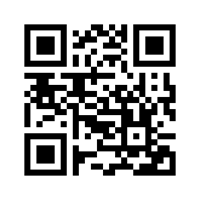
Goddard Space Flight Center, Greenbelt, Maryland 20771
ENGINEERING COLLOQUIUM
Monday, April 3, 2017 / 3:30 PM, Building 8 Auditorium
Jan Stupl
"Just-in-Time Collision Avoidance Using Ground-Based Lasers"
ABSTRACT -- Space debris are leftovers from human activities in space. Earth orbit gets increasingly congested by a rising number of active spacecraft and debris, resulting in an increased risk of collision. Collisions with debris can destroy entire spacecraft. The additional debris increases the risk of further collision. There are several dilemmas: If we want to further our venture into space beyond what is possible today, a vastly increased number of rocket launches are necessary. That could negatively impact the debris environment and make further space endeavors more challenging. Proposed active debris removal methods could lessen that problem. However, such methods have dual-use implications, because a capability to remove large pieces of debris from orbit also implies a capability to remove active spacecraft.
This talk will give an overview about origins of debris, projections of the future debris environment, and debris mitigation methods. A special focus will be on a debris mitigation method based on ground-based lasers, called LightForce. LightForce aims to prevent collisions on warning by utilizing photon pressure from ground based, commercial off the shelf lasers. The photon pressure is not sufficient to de-orbit debris, but past research has shown that a few ground-based systems consisting of 10 kW class lasers directed by 1.5 m telescopes could significantly lower the probability of collision for most conjunctions. This talk will present simulation approach and results for an efficacy analysis of the scheme.
SPEAKER -- Dr. Jan Stupl is Research Scientist working as a on-site contractor in the NASA Ames Mission Design Division since 2011. In the Mission Design Division, Jan conducts research on novel methods for laser communication and space debris mitigation and supports concept development for space missions. Jan has led and supported numerous concept development efforts ranging from LEO to deep space missions. Jan’s research includes development and experimental evaluation of modulating retro-reflectors for laser communication. He also is supporting a mission to demonstrate optical time transfer between ground and space atomic clocks.
Before his current position, Jan was a postdoctoral fellow at the Center for International Security and Cooperation (CISAC) at Stanford University until 2011, investigating technical and policy implications of high power lasers for missile defense and as anti-satellite weapons. In 2008, he received his PhD in laser physics from Hamburg University for a technical analysis of the Airborne Laser missile defense program, which he conducted as cooperation with the Institute for Peace Research and Security Policy at the University of Hamburg, the Physics Department, and the Institute of Laser and System Technologies at Hamburg University of Technology.
Colloquium Committee Sponsor: Brent Warner
Engineering Colloquium home page: https://ecolloq.gsfc.nasa.gov